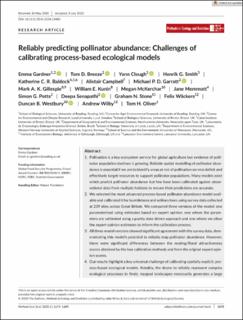| dc.contributor.author | Gardner, Emma | |
| dc.contributor.author | Breeze, Tom D. | |
| dc.contributor.author | Clough, Yann | |
| dc.contributor.author | Smith, Henrik G. | |
| dc.contributor.author | Baldock, Katherine C. R. | |
| dc.contributor.author | Campbell, Alistair | |
| dc.contributor.author | Garratt, Michael | |
| dc.contributor.author | Gillespie, Mark Andrew | |
| dc.contributor.author | Kunin, William E. | |
| dc.contributor.author | McKerchar, Megan | |
| dc.contributor.author | Memmott, Jane | |
| dc.contributor.author | Potts, Simon G. | |
| dc.contributor.author | Senepathi, Deepa | |
| dc.contributor.author | Stone, Graham N. | |
| dc.contributor.author | Wackers, Felix | |
| dc.contributor.author | Westbury, Duncan B. | |
| dc.contributor.author | Wilby, Andrew | |
| dc.contributor.author | Oliver, Tom H. | |
| dc.date.accessioned | 2021-03-16T14:08:38Z | |
| dc.date.available | 2021-03-16T14:08:38Z | |
| dc.date.created | 2021-03-01T11:41:40Z | |
| dc.date.issued | 2020 | |
| dc.identifier.citation | Gardner, E., Breeze, T. D., Clough, Y., Smith, H. G., Baldock, K. C. R., Campbell, A., . . . Freckleton, R. (2020). Reliably predicting pollinator abundance: Challenges of calibrating process‐based ecological models. Methods in Ecology and Evolution, 11 (12), 1673-1689. | en_US |
| dc.identifier.issn | 2041-210X | |
| dc.identifier.uri | https://hdl.handle.net/11250/2733710 | |
| dc.description.abstract | Pollination is a key ecosystem service for global agriculture but evidence of pollinator population declines is growing. Reliable spatial modelling of pollinator abundance is essential if we are to identify areas at risk of pollination service deficit and effectively target resources to support pollinator populations. Many models exist which predict pollinator abundance but few have been calibrated against observational data from multiple habitats to ensure their predictions are accurate.
We selected the most advanced process‐based pollinator abundance model available and calibrated it for bumblebees and solitary bees using survey data collected at 239 sites across Great Britain. We compared three versions of the model: one parameterised using estimates based on expert opinion, one where the parameters are calibrated using a purely data‐driven approach and one where we allow the expert opinion estimates to inform the calibration process.
All three model versions showed significant agreement with the survey data, demonstrating this model's potential to reliably map pollinator abundance. However, there were significant differences between the nesting/floral attractiveness scores obtained by the two calibration methods and from the original expert opinion scores.
Our results highlight a key universal challenge of calibrating spatially explicit, process‐based ecological models. Notably, the desire to reliably represent complex ecological processes in finely mapped landscapes necessarily generates a large number of parameters, which are challenging to calibrate with ecological and geographical data that are often noisy, biased, asynchronous and sometimes inaccurate. Purely data‐driven calibration can therefore result in unrealistic parameter values, despite appearing to improve model‐data agreement over initial expert opinion estimates. We therefore advocate a combined approach where data‐driven calibration and expert opinion are integrated into an iterative Delphi‐like process, which simultaneously combines model calibration and credibility assessment. This may provide the best opportunity to obtain realistic parameter estimates and reliable model predictions for ecological systems with expert knowledge gaps and patchy ecological data. | en_US |
| dc.language.iso | eng | en_US |
| dc.publisher | Wiley | en_US |
| dc.rights | Navngivelse 4.0 Internasjonal | * |
| dc.rights.uri | http://creativecommons.org/licenses/by/4.0/deed.no | * |
| dc.title | Reliably predicting pollinator abundance: Challenges of calibrating process-based ecological models | en_US |
| dc.type | Journal article | en_US |
| dc.type | Peer reviewed | en_US |
| dc.description.version | publishedVersion | en_US |
| dc.rights.holder | © 2020 The Authors. | en_US |
| dc.source.pagenumber | 1673-1689 | en_US |
| dc.source.volume | 11 | en_US |
| dc.source.journal | Methods in Ecology and Evolution | en_US |
| dc.source.issue | 12 | en_US |
| dc.identifier.doi | 10.1111/2041-210X.13483 | |
| dc.identifier.cristin | 1894481 | |
| cristin.ispublished | true | |
| cristin.fulltext | original | |
| cristin.qualitycode | 2 | |

